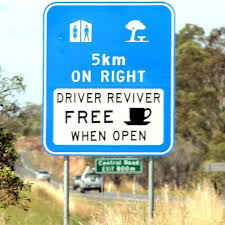To illustrate how ‘reasonable’ they are, rural and remote health advocates are fond of agreeing that one cannot expect a dialysis unit or chemotherapy facility on the corner of the street in every small country town.

With technical advances in miniaturisation, point-of-care testing, IT and artificial intelligence, such a presumption may in fact one day be false.
But the general point is taken: that high cost service facilities paid for by the public purse must be shared across large numbers of users in order to make the unit cost acceptable. The extreme case of having specialised services everywhere is unreasonable.
At the other end of the spectrum is the apparent truth that all people should have equivalent access to basic public services such as education, health and telecommunications. These services should be available as a right. But at what cost and how close to home?
So where is the line drawn between the two extremes?
The question has been given some exposure in Western Australia this week. In a Hearing at Fitzroy Crossing of the Kimberley Aboriginal youth suicide inquest, the WA Government Solicitor, Caroline Thatcher, questioned senior community leader Emily Carter about whether those in remote communities should expect the same level of services as those in more built-up areas. [http://ab.co/2hqkrIC]
“As citizens of this country they should be able to get the same services as people who live in the city or in Broome,” Ms Carter responded.
When Ms Thatcher asked if that was reasonable for those who chose to live remotely, where there were very few economic opportunities, Ms Carter is reported as saying: “You’re trying to take me down a path here that is not mine. It’s not just about jobs, it’s about spiritual wellbeing, and about living on country”.

This report will remind some of us of WA Premier Colin Barnett’s proposal in late 2014 to close between 100 and 150 of the 274 remote communities in WA, saying the State Government could no longer continue to service them. [http://ab.co/2hq69aC]
"The possible closure comes amid Federal Government funding cuts for remote Indigenous communities. The Commonwealth was the major funder of around two thirds of the state's Indigenous settlements - with the state funding the rest -but that responsibility is being transitioned to the states over the next two years. When it was announced in September 2014, the state described the Federal Government's move as "reprehensible"."
The Department of Aboriginal Affairs was quoted in that story as saying that, of the 12,113 Aboriginal people currently living in 274 communities in WA, 1,309 Aboriginal people were in 174 of the smallest. Across 115 of those communities, there were 507 people in total.
Emily Carter and her colleague June Oscar spoke about the work they have led to combat what they describe as “the cycle of trauma”, including by reducing the incidence of Foetal Alcohol Spectrum Disorder, at the NRHA/Children’s Healthcare Australasia Caring for Kids Conference in Alice Springs (April 2016). [You can stream their presentation here: http://bit.ly/2w8h9wT]
One of the key words in the reported question from the Government Solicitor is “chose”. Do people who find themselves in a small remote community choose to live there, or do they choose not to leave the place in which they have always lived?
These are real and important questions. What is the relationship between freedom of choice with respect to location and the responsibility of the state? What is a reasonable expectation about access to services deemed to be part of human rights? In a finite world, what are the global responsibilities of the citizens and governments of an affluent nation?

An article by Susan Thomas, John Wakerman and John Humphreys, based on research funded through PHCRIS, grappled with some of these issues. Their study set out to help policy makers and health planners with the issue of the core primary health care services to which all Australians should have access – and their necessary support functions.
The 39 experts from whom they sought a view agreed on a basket of services that consumers in rural and remote communities could expect to access. They are ‘care of the sick and injured’, ‘mental health’, ‘maternal/child health’, ‘allied health’, ‘sexual/reproductive health’, ‘rehabilitation’, ‘oral/dental health’ and ‘public health/illness prevention’.
So far, so good. The next challenge is to fashion the means for delivering these services that are affordable, guarantee safety and cultural sensitivity, and are practicable given their need for professional expertise.
Roll on those technical advances!
